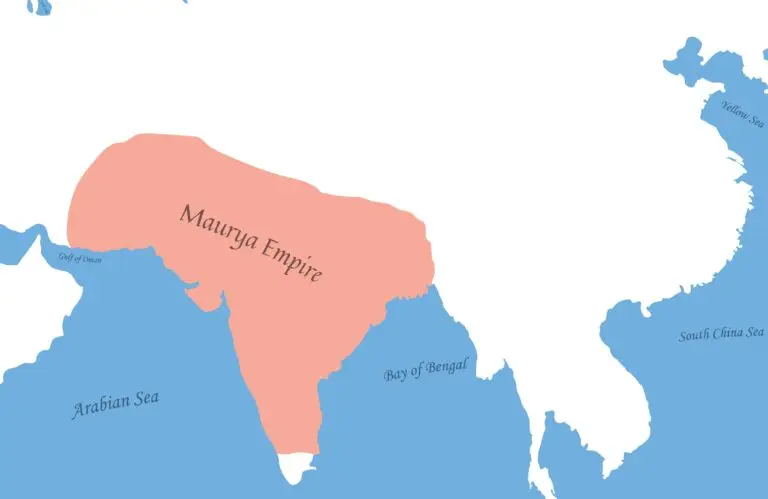Maurya Empire

Table of Contents
Maurya Empire Overview
The Maurya Empire was a powerful ancient Indian empire from approximately 322 BCE to 185 BCE. It was founded by Chandragupta Maurya, who overthrew the Nanda dynasty and established the first centralized imperial administration in the Indian subcontinent.
Under the reign of Chandragupta Maurya and his successors, notably Ashoka the Great, the Maurya Empire expanded to encompass most of the Indian subcontinent, becoming one of the largest empires in South Asian history. The empire’s capital was Pataliputra (modern-day Patna), which thrived economically through agriculture, trade, and taxation.
The Maurya Empire is known for its efficient bureaucracy, religious tolerance, and significant cultural and architectural achievements. Ashoka, in particular, is renowned for his conversion to Buddhism and his promotion of peace and nonviolence, as evidenced by his edicts inscribed on pillars and rocks throughout the empire.
Maurya Empire History
The Maurya Empire was an ancient Indian empire that flourished from around 322 BCE to 185 BCE, spanning much of the Indian subcontinent.
Founded by Chandragupta Maurya, the empire rose to prominence after the overthrow of the Nanda dynasty, marking the beginning of the Mauryan dynasty.
Chandragupta Maurya was inspired and advised by the philosopher Chanakya (also known as Kautilya or Vishnugupta), who wrote the Arthashastra, a treatise on statecraft and governance.
Under Chandragupta Maurya and his successors, particularly Ashoka the Great, the Maurya Empire expanded to become the largest empire in ancient India, encompassing territories from present-day Afghanistan to Bangladesh and parts of Iran.
Ashoka, the grandson of Chandragupta Maurya, is best known for his conversion to Buddhism and his efforts to promote peace, tolerance, and moral governance through his edicts and inscriptions, known as the Ashoka Pillars.
The Maurya Empire was characterized by a highly centralized administration with a complex bureaucracy, an efficient tax system, and a network of officials responsible for governance, law enforcement, and revenue collection.
The empire made significant contributions to Indian art, architecture, and culture, as seen in the construction of the Great Stupa at Sanchi, the Ashoka Pillars, and the development of the Mauryan script.
The decline of the Maurya Empire began after the death of Ashoka, which was marked by succession disputes, internal rebellions, and invasions by foreign powers such as the Greeks and the Sunga dynasty.
Following the fall of the Maurya Empire, the Indian subcontinent witnessed a period of political fragmentation and regional kingdoms until the rise of the Gupta Empire in the 4th century CE.
Despite its eventual decline, the Maurya Empire left a lasting legacy on Indian history, serving as a model of imperial governance and inspiring subsequent dynasties and rulers in India.
Related Links
Bourbon Dynasty
Gupta Empire
Hapsburg Dynasty
Ottoman Empire